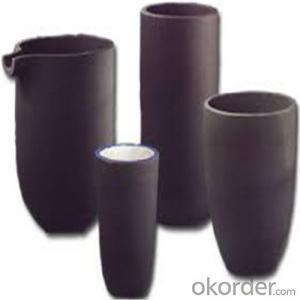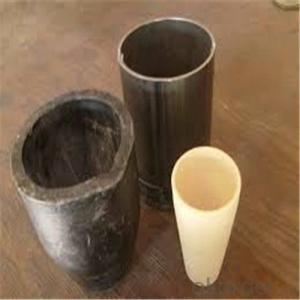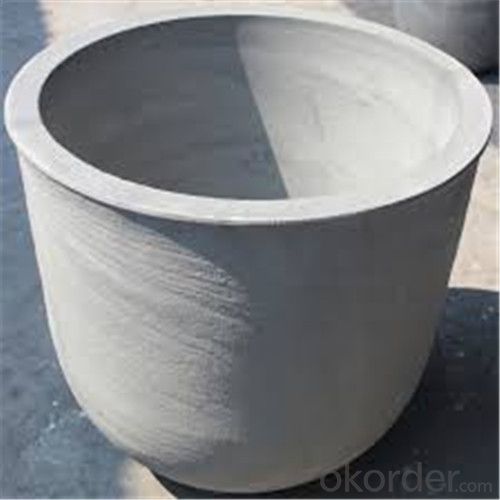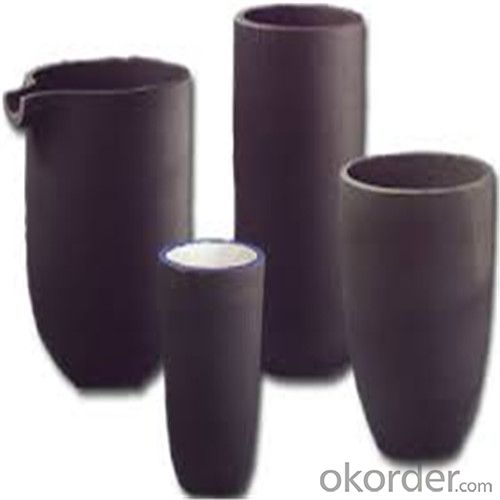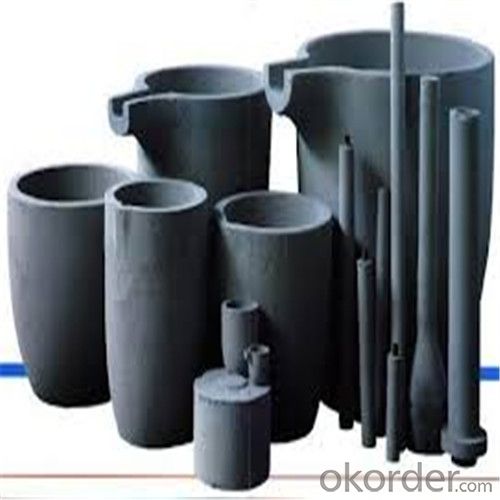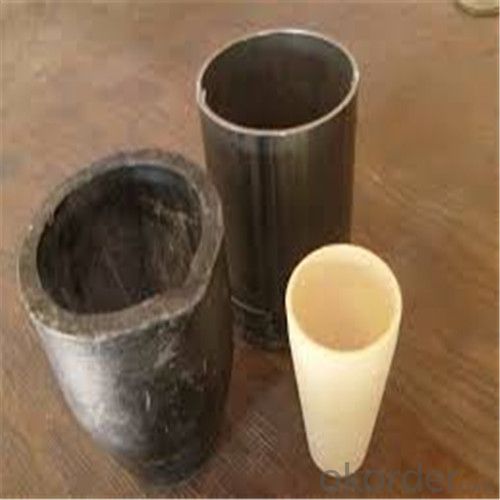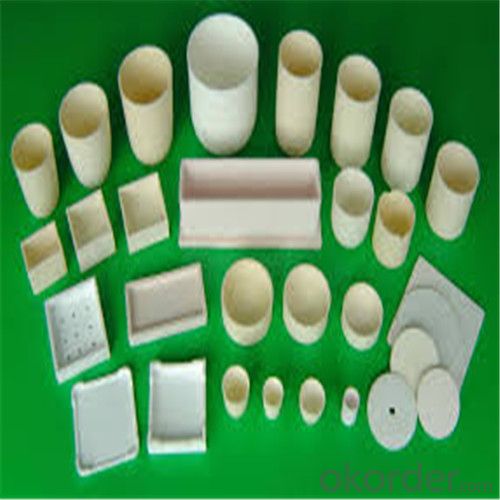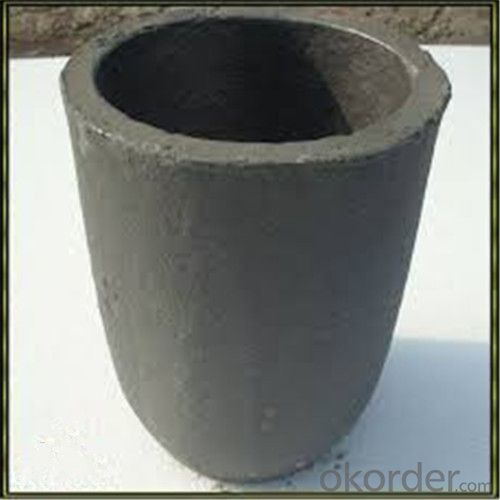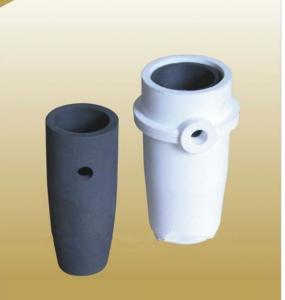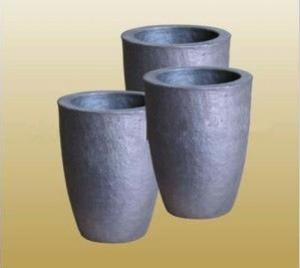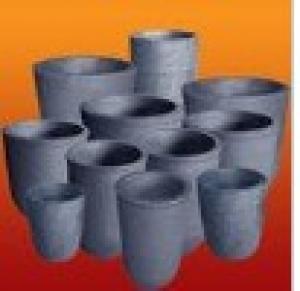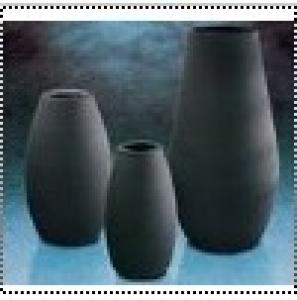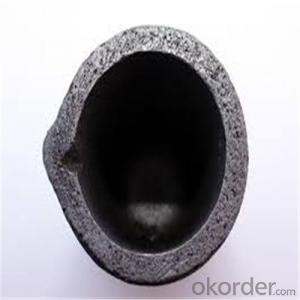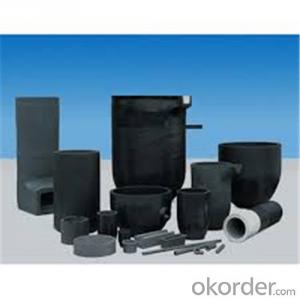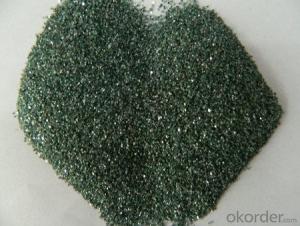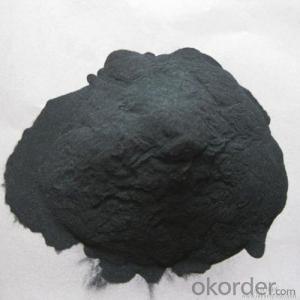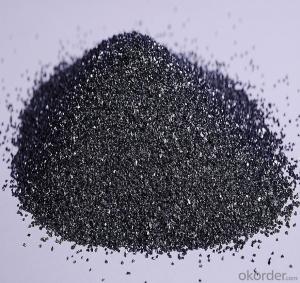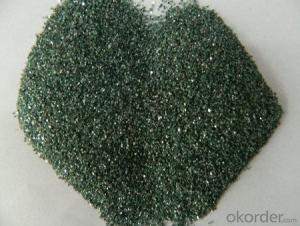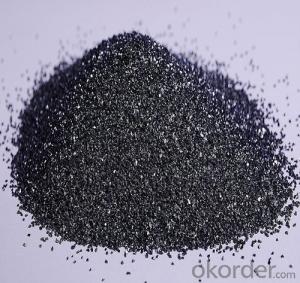Refractory Crucibles Sic Crucible For Brass
- Loading Port:
- Shanghai
- Payment Terms:
- TT OR LC
- Min Order Qty:
- 1 pc
- Supply Capability:
- 1000 pc/month
OKorder Service Pledge
OKorder Financial Service
You Might Also Like
Quick Details for Refractory Crucibles Sic Crucible For Melting Copper/Brass/Aluminum
| Type: | High Strength, graphite crucible crucible | Application: | melting metal | Height: | as your requirements |
| Composition: | High Pure | Top Diameter: | 10-600mm | Bottom Diameter: | 10-1000mm |
| Place of Origin: | China (Mainland) | Brand Name: | Model Number: | ||
| Color: | Black grey | Si3N4%: | 5min | Fe2O3%: | 0.7max |
| C%: | 30-45 | Apparent porosity: | 30max | Refractoriness: | 1680 |
| Bulk Density: | 1.71min | Using life: | >5000 hours | MAX temperature: | 1600c |
Packaging & Delivery
| Packaging Details: | Seaworty packing or as per customer's detail requirement of graphite crucible. |
| Delivery Detail: | within 20-30 days after confirm order of graphite cru |
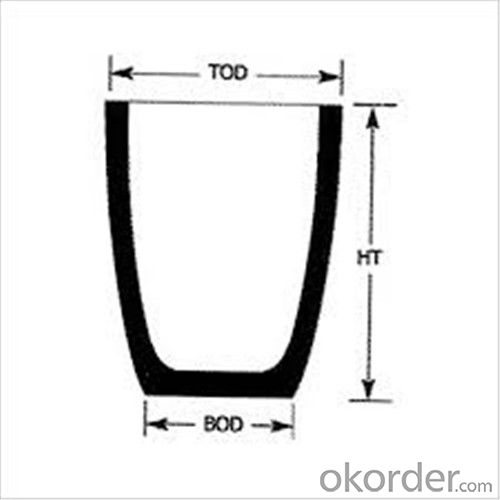

Refractory Crucibles Sic Crucible For Melting Copper/Brass/Aluminum
Physicochemical Properties
Type of Crucible | Type S | Type D |
Carbon Content/% | ≥38 | ≥45 |
Bulk Density/(g/cm3) | ≥1.70 | ≥1.85 |
Apparent Porosity/% | ≤29 | ≤21 |
Compression Strength/MPa | ≥20 | ≥25 |
Refractoriness/°C | ≥1400 | ≥1400 |
Type S: Clay graphite crucible
Type D: Isostatic pressing graphite crucible
Cited from CNS China National Standard of Graphite Crucible, which is solely drifted by TIANFU company.
Content Composition
C% | Sic% | AL2O3% | SIO2% |
45%-50% | 20%-30% | 10%-12% | 15-25% |
FAQ
1.What's your MOQ?
We will indicate the MOQ for each item in the quotation list. We accept the sample and trail order.
2.Can I negotiate the Prices?
Sure, we may consider discounts for bulk order of products.
3.How long will it take to complete my order?
For the stock items, we can arrange the shippment within 2~3days after received your payment. For the customized items, we will indicate the delivery time in the quotation list.
4.Can you give warranty of your products?
Yes, we extend a 100% satifisfaction guarantee on all items. Please feel free to provide timely feedback if you're not satisfied with N&D's Quality and Service. For the overseas orders, if there is a quality problem, please kindly to provide the picturers to show the problem by e-mail. We will provide the replacements to you at our cost according to actual conditions.
Welcome to visit our factory.
- Q: How is a graphite crucible manufactured?
- A graphite crucible is manufactured by first selecting high-quality graphite material and then shaping it into the desired crucible shape through a combination of machining and molding techniques. The graphite material is typically mixed with a binder and placed into a mold. It is then compressed and heated to cure the binder, resulting in a solid graphite structure. The crucible is then further processed to achieve the desired dimensions, surface finish, and strength. Finally, it undergoes a thorough quality control inspection to ensure it meets the required specifications before being ready for use in various industrial applications.
- Q: Are there any specific storage requirements for graphite crucibles?
- Yes, graphite crucibles have specific storage requirements. They should be stored in a dry and cool environment to prevent oxidation and damage. It is essential to keep them away from moisture, direct sunlight, and extreme temperature fluctuations. Additionally, they should be stored in a clean area to avoid contamination from dust or other substances.
- Q: Can graphite crucibles be used for powder metallurgy?
- Indeed, powder metallurgy can utilize graphite crucibles. Graphite proves to be an exceptional substance for applications involving high temperatures, and it is frequently employed in powder metallurgy procedures. Graphite crucibles possess a melting point that is notably high and exhibit outstanding thermal conductivity, rendering them perfectly suited for the process of melting and retaining metal powders during sintering or melting operations. Furthermore, graphite crucibles demonstrate commendable chemical resistance, enabling them to endure the corrosive impact of specific metal powders. In summary, graphite crucibles present themselves as a dependable and efficient option for applications within the realm of powder metallurgy.
- Q: In the melting of aluminum alloys, what is the frequency furnace and the crucible type furnace? I heard that the frequency furnace power is lower, faster and more power saving
- It's simple。 Medium frequency furnace can also be placed on a crucible, molten copper, molten aluminum, zinc smelting can be.
- Q: Which crucibles are available for melting sodium hydroxide?
- Graphite crucibles and metal crucibles can be usedA porcelain crucible can not be used because of its silicate content, which reacts with NaOH and damages it.
- Q: What material can be used to build a furnace for intermediate frequency melting of aluminium bronze?
- Hello, it seems that your smelting furnace is not big. In general, the furnace is melted by the medium frequency smelting furnace. You can only melt two of a small pot.
- Q: Can graphite crucibles be used for melting composite materials?
- Yes, graphite crucibles can be used for melting composite materials. Graphite crucibles are known for their high melting point and good thermal conductivity, which makes them suitable for melting a wide range of materials, including composite materials. Additionally, graphite crucibles are resistant to chemical reactions, making them ideal for handling and containing composite materials during the melting process. However, it is important to consider the specific composition and melting point of the composite material to ensure that it is compatible with the graphite crucible.
- Q: What are the different methods of preventing contamination from graphite particles?
- There are several methods that can be used to prevent contamination from graphite particles. 1. Use of containment systems: One method is to use a containment system, such as an enclosed environment or a glove box, to prevent graphite particles from escaping into the surrounding area. These containment systems can be equipped with air filtration and ventilation systems to remove any graphite particles that may be present in the air. 2. Proper handling and storage: Another method of preventing contamination is to ensure that graphite particles are properly handled and stored. This may involve using sealed containers or bags to store graphite, and using appropriate handling techniques to minimize the release of particles into the environment. 3. Regular cleaning and maintenance: Regular cleaning and maintenance of equipment and surfaces that come into contact with graphite can help prevent contamination. This may involve using specialized cleaning methods, such as wet cleaning or vacuuming, to remove any graphite particles that may be present. 4. Personal protective equipment: Using personal protective equipment, such as gloves, masks, and coveralls, can help prevent contamination from graphite particles. These protective measures can help minimize direct contact with graphite, reducing the risk of contamination. 5. Proper training and education: Providing training and education to personnel who handle graphite can help raise awareness about the risks of contamination and the proper precautions to take. This can include training on proper handling techniques, the use of personal protective equipment, and the importance of regular cleaning and maintenance. By employing these methods, contamination from graphite particles can be effectively prevented, ensuring a safe and clean working environment.
- Q: Can graphite crucibles be used for plasma arc melting?
- Yes, graphite crucibles can be used for plasma arc melting. Graphite crucibles are known for their high thermal conductivity and resistance to high temperatures, which makes them suitable for use in various high-temperature applications. Plasma arc melting, which involves the use of an electric arc to generate and sustain a plasma state, requires a crucible that can withstand the intense heat generated during the process. Graphite crucibles are able to withstand these high temperatures and provide a stable and durable container for the molten material produced during plasma arc melting. Additionally, graphite crucibles offer good chemical resistance and can handle corrosive materials that may be present during plasma arc melting. Overall, graphite crucibles are a commonly used and effective choice for plasma arc melting applications.
- Q: What are the different methods of preventing contamination from graphite dust?
- There are several methods that can be employed to prevent contamination from graphite dust. 1. Ventilation Systems: Installing proper ventilation systems in areas where graphite dust is generated is crucial in preventing its spread. These systems help to capture and remove the dust particles from the air, reducing the chances of inhalation or settling on surfaces. 2. Enclosures and Barriers: Creating physical barriers and enclosures around graphite dust generating areas can help contain the dust particles within a controlled space. This prevents the dust from spreading to other parts of the facility or affecting nearby equipment. 3. Personal Protective Equipment (PPE): Workers who are exposed to graphite dust should wear appropriate PPE to minimize contamination. This may include wearing respiratory masks or respirators, goggles, gloves, and protective clothing to prevent direct contact with the dust. 4. Regular Cleaning and Maintenance: Implementing a strict cleaning and maintenance schedule is essential to prevent the buildup and spread of graphite dust. Surfaces, equipment, and machinery should be regularly cleaned using methods that minimize dust dispersion, such as wet cleaning or vacuuming with HEPA filters. 5. Process Modification: Modifying the production process can also help prevent graphite dust contamination. Implementing measures like wet cutting or machining instead of dry processes can significantly reduce the generation and spread of dust particles. 6. Training and Awareness: Educating workers about the hazards of graphite dust and providing training on proper handling, cleaning, and maintenance procedures is instrumental in preventing contamination. Workers should be aware of the risks associated with graphite dust exposure and be equipped with the knowledge to take necessary precautions. By adopting a combination of these methods, facilities can effectively prevent contamination from graphite dust, ensuring a safe and healthy working environment.
Send your message to us
Refractory Crucibles Sic Crucible For Brass
- Loading Port:
- Shanghai
- Payment Terms:
- TT OR LC
- Min Order Qty:
- 1 pc
- Supply Capability:
- 1000 pc/month
OKorder Service Pledge
OKorder Financial Service
Similar products
Hot products
Hot Searches
Related keywords

